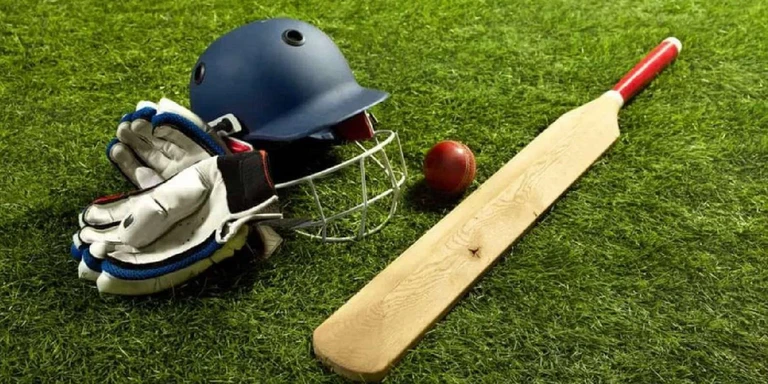Zaheer Khan, an iconic Indian fast bowler, revolutionized the art of fast bowling with his pace, reverse swing, and deadly yorkers. Initially, on a path to becoming an engineer, Zaheer made a pivotal decision to pursue cricket, quickly reaping rewards. He burst onto the international scene at the ICC Knockout Trophy in 2000, claiming 3 wickets for 48 runs on debut. His Test debut followed soon after, where he continued to impress with his wicket-taking prowess.
Rise to Prominence and World Cup Journey
Forming a Fearsome Pace Trio
Zaheer Khan formed a formidable partnership with Javagal Srinath and Ashish Nehra, playing a crucial role in India’s journey to the 2003 World Cup finals. Although the final didn’t go as planned, his bowling credentials were established firmly on the global stage.
A New Beginning in Worcestershire
Revival and Reintegration into Indian Cricket
In 2006, Zaheer joined Worcestershire as their overseas player, taking 78 wickets and showcasing his enduring talent. Nicknamed “Zippy Zakky,” he returned to the Indian team, leaner and reinvigorated, swiftly becoming a mainstay in the squad.
Iconic Test Performances
One of Zaheer’s defining moments came during the Nottingham Test in 2007 when he was spurred on by the “Jelly Beans” incident to claim a five-wicket haul, leading India to a memorable victory. Under MS Dhoni’s captaincy, Zaheer was instrumental in India reaching the number one Test ranking and triumphing in the 2011 World Cup, where his leadership and experience were invaluable.
Challenges and Legacy
Battles with Injury and Final Test Years
Injuries plagued Zaheer’s later career, particularly during the 2011 England tour, severely impacting India’s performance overseas. Despite setbacks, he maintained respectable performances, concluding his Test career with 311 wickets, the second-highest for an Indian pacer after Kapil Dev. His final Test appearance was against New Zealand in 2014.
IPL and Tactical Brilliance
Contributions and Leadership in T20 Cricket
Zaheer continued to showcase his skill in the Indian T20 League, playing for teams like Bengaluru, Mumbai, and Delhi. At Delhi, he not only revived their bowling attack but also captained the team in 2016, displaying his tactical acumen despite battling injuries.
Zaheer Khan’s Enduring Legacy
Sharpness and Mental Strength
Zaheer Khan’s reputation extends beyond his numbers, characterized by his tactical brilliance and mental fortitude. His famous four sixes against Henry Olonga and consistent success against players like Graeme Smith underline his cricketing intelligence. His insights and skills remain a valuable asset that India hopes to utilize in mentoring future generations.
Zaheer Khan’s achievements
Zaheer Khan, one of India’s most accomplished fast bowlers, has numerous achievements that highlight his contributions to cricket both nationally and internationally. Here are some of his most notable achievements:
- Second-Highest Wicket-Taking Indian Pacer: Zaheer Khan ended his Test career with 311 wickets, making him the second-highest wicket-taking fast bowler from India, following Kapil Dev.
- Key Figure in India’s 2011 World Cup Win: Zaheer played a crucial role in India’s victory at the 2011 ICC Cricket World Cup, finishing as the joint-highest wicket-taker of the tournament with 21 wickets. His performances in critical matches were instrumental in India’s success.
- Success in the 2003 World Cup: He was a vital member of the Indian team that reached the finals of the 2003 ICC Cricket World Cup, forming a formidable pace attack with Javagal Srinath and Ashish Nehra.
- Reverse Swing Mastery: Known for his skill in reverse swing, Zaheer was instrumental in many of India’s overseas Test victories, notably contributing to India’s series win in England in 2007.
- MS Dhoni’s Trusted Bowler: Under Dhoni’s captaincy, Zaheer was a key figure in India’s ascent to the number one Test ranking, providing crucial wickets and strategic insights.
- County Success with Worcestershire: During his stint with Worcestershire in 2006, Zaheer took an impressive 78 wickets, proving his prowess and earning the nickname “Zippy Zakky.”
- Impact in Border-Gavaskar Trophy: Zaheer’s performances in Test matches against Australia, including pivotal series in 2008 and 2010, highlighted his ability to take crucial wickets at key moments.
- Leadership in the Indian T20 League: Beyond his bowling, Zaheer showcased leadership skills, captaining Delhi Capitals (formerly Daredevils) and playing a significant role in nurturing young talents.
- Memorable ODI Innings: His batting prowess was evident in moments such as hitting four consecutive sixes off Henry Olonga in an ODI match, showcasing his all-round capabilities.
Zaheer Khan’s career is marked by his strategic brilliance, mental toughness, and ability to perform under pressure, making him a legend in Indian and world cricket. His legacy continues to inspire future generations of fast bowlers.
FAQs About Zaheer Khan
What made Zaheer Khan a standout bowler?
Zaheer Khan’s ability to consistently deliver pace, reverse swing, and yorkers made him one of the most formidable fast bowlers of his time. His strategic approach and mental toughness further set him apart.
How did Zaheer Khan perform in the 2003 World Cup?
Zaheer played a critical role in India’s run to the 2003 World Cup final, forming a strong pace attack with Srinath and Nehra, although he had a challenging outing in the final against Australia.
What were Zaheer Khan’s achievements in Test cricket?
Zaheer Khan ended his Test career with 311 wickets, making him the second-highest wicket-taking Indian pacer after Kapil Dev. His contributions were pivotal in India achieving the number one Test ranking.
How did injuries affect Zaheer Khan’s cricket career?
Injuries, particularly in his later career, limited Zaheer’s participation in crucial tours and tournaments, impacting his match presence and performance consistency.
What role did Zaheer Khan play in the Indian T20 League?
Zaheer was a key player and captain in the Indian T20 League, representing teams like Bengaluru, Mumbai, and Delhi. His leadership and tactical skills were instrumental in revitalizing Delhi’s bowling attack.













